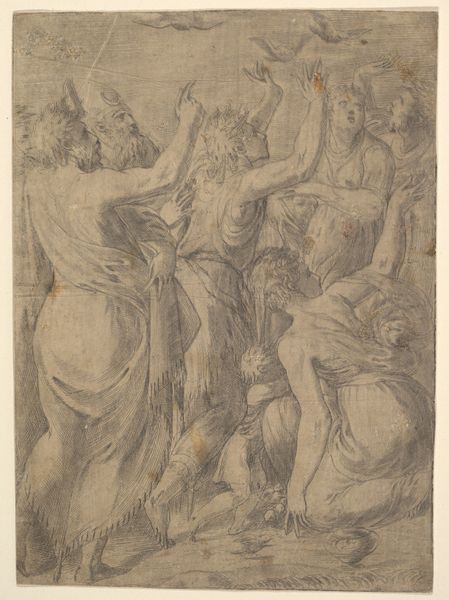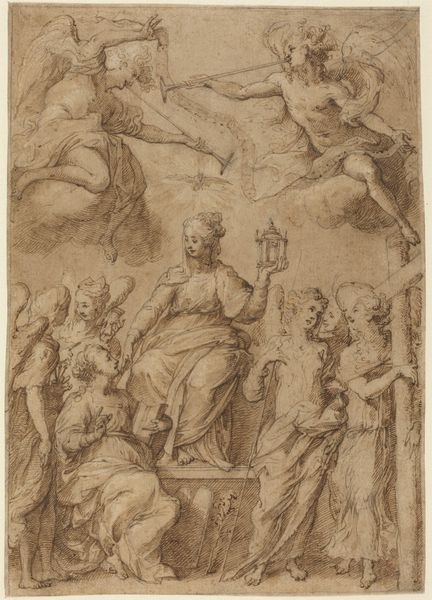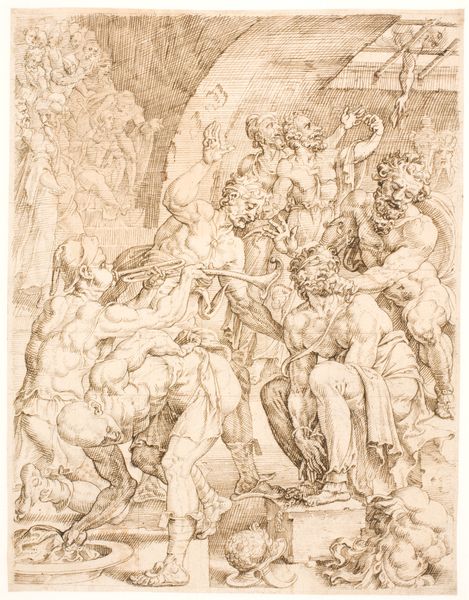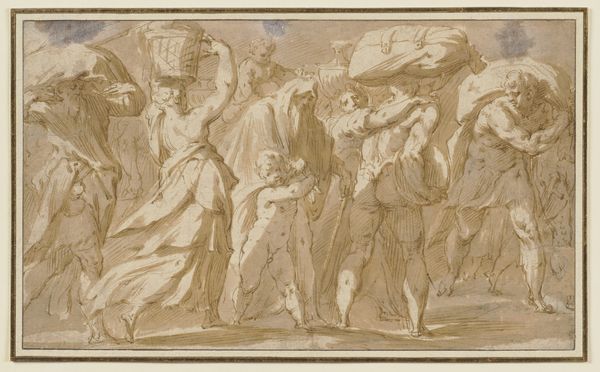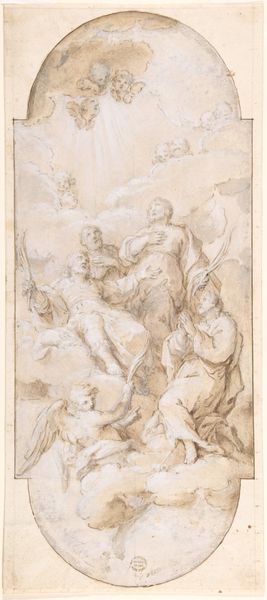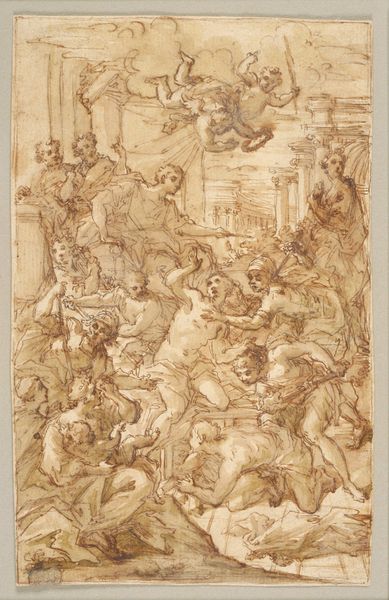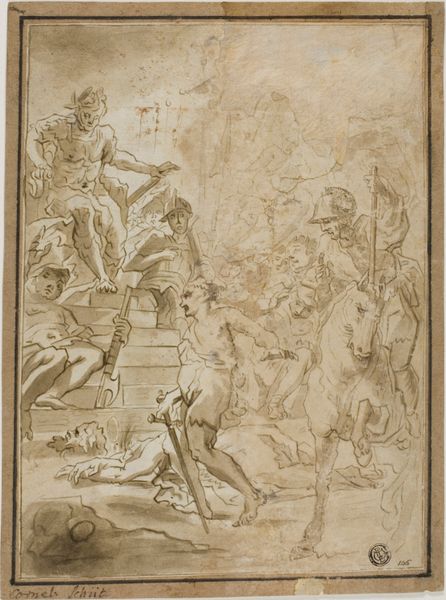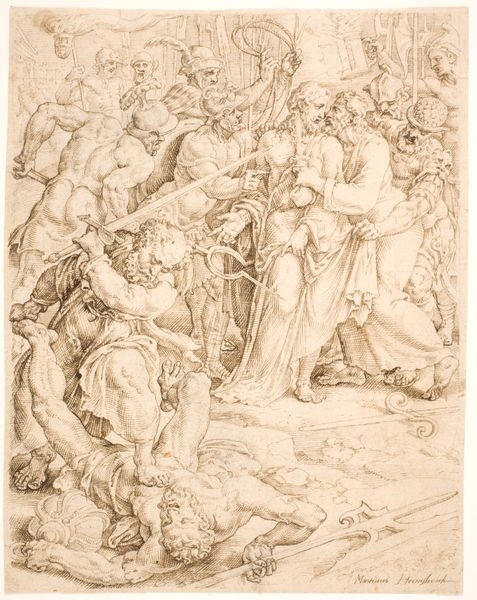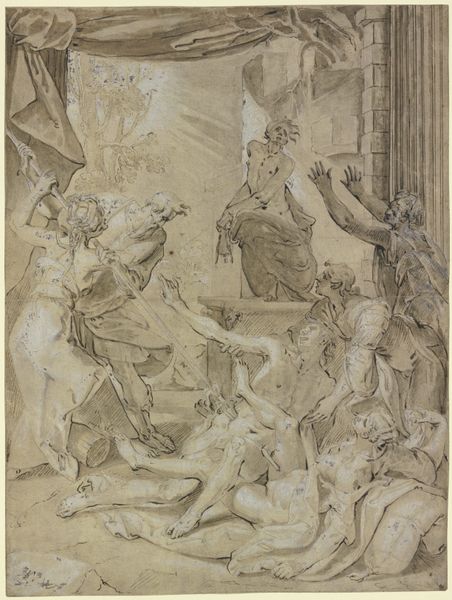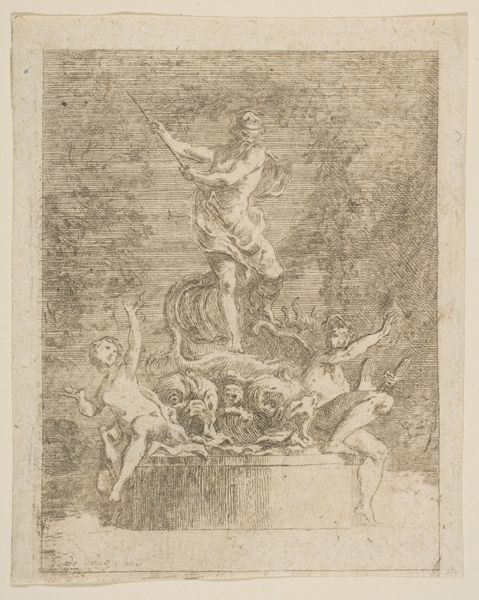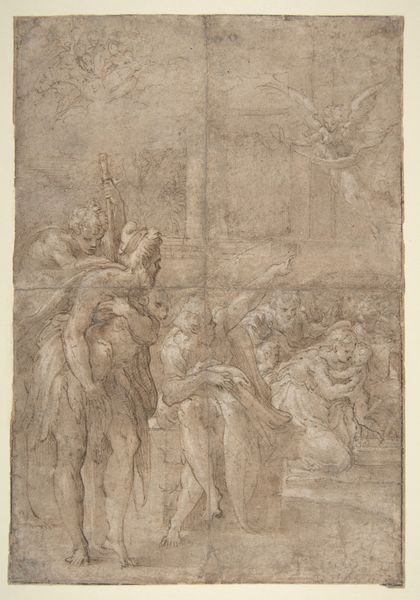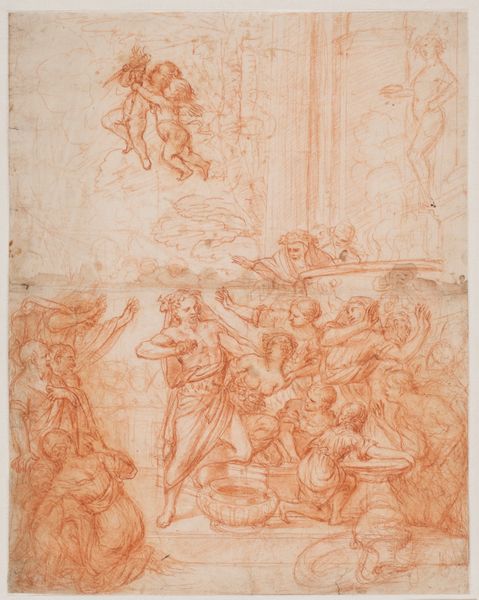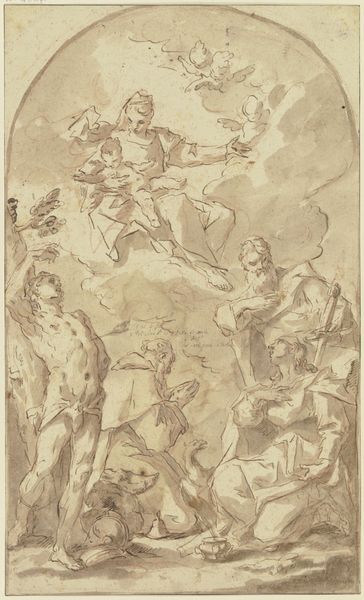
Triumph of a Roman warrior; allegory in honour of Camillo Pamphilj 1598 - 1654
drawing, ink
drawing
allegory
narrative-art
baroque
ink painting
figuration
11_renaissance
ink
history-painting
academic-art
Dimensions: 301 mm (height) x 218 mm (width) (bladmaal)
Editor: Here we have Alessandro Algardi’s ink drawing, "Triumph of a Roman Warrior; allegory in honour of Camillo Pamphilj," dating from 1598 to 1654. I’m immediately struck by the dynamism of the composition. It feels almost theatrical, with figures crowding the space. What visual elements stand out to you the most in this work? Curator: The piece reveals an interesting manipulation of space and form. Note how Algardi uses the limited tonal range of the ink to suggest depth. Figures in the foreground are more defined, built up of finer, more closely arranged hatched lines, and as the figures recede, he uses looser cross hatching. It contributes to the illusion of depth, but also flattens in key areas. Can you see how the archway, despite being structurally important, blends almost seamlessly into the crowded scene behind? Editor: I do. The hatching feels almost frenetic in places. Is that intentional, or simply the technique of the time? Curator: The frenetic energy of the hatching reinforces the Baroque style, in contrast to Renaissance clarity. Lines, therefore, possess not only a descriptive function, but an expressive quality. The repeated diagonal lines establish movement while simultaneously drawing the eye. Note also the interplay between linear precision and blurred or shaded form: what might this suggest? Editor: Perhaps the combination represents an interesting formal tension between reality and idealized representation? Curator: Precisely. The interplay of light and shadow models this tension. What appears, at first glance, a merely representational gesture reveals a deliberate strategy of visual coding. We can thus see how Algardi creates meaning within a relatively constrained formal vocabulary. Editor: That makes me consider the intentionality of Algardi's process on a deeper level, far beyond simple illustration of the "triumph." Thank you! Curator: And I see how an attention to structure and texture can make any analysis so much more profound.
Comments
No comments
Be the first to comment and join the conversation on the ultimate creative platform.
